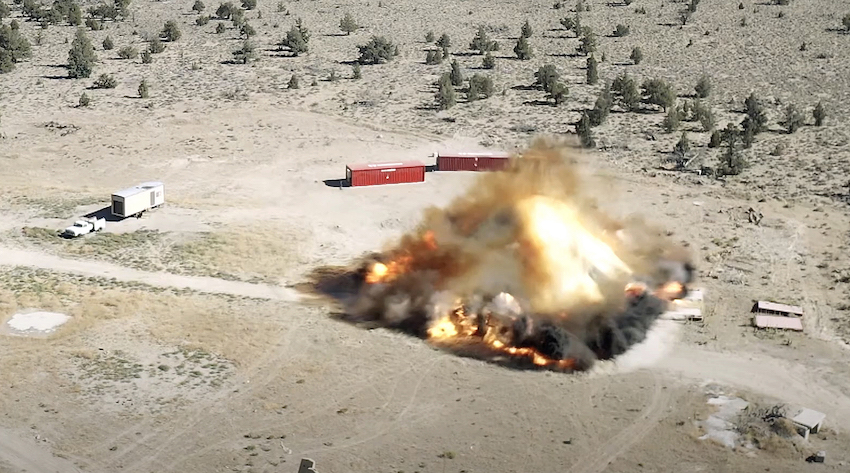Safety & Regulations | Best Practices | Design & Engineering
Blast Resistant Building Put To The Test: RedGuard Blast Test Results


In industries and environments where vessels, infrastructure, and buildings must routinely operate under conditions of high temperature and pressure, eruptions or explosions may occur unexpectedly if safety protocols are overlooked, equipment wears out, or another problem arises.
To ascertain the structural integrity of these infrastructure elements under high-stress conditions – and to assess the effects on personnel working in such environments – manufacturer blast testing on structure designs is essential.
In a blast test, structures and fittings in a configuration similar to standard working conditions are subjected to a controlled explosion under test monitoring conditions. The results of such a test can provide valuable information as to the safety or otherwise of current building standards and materials, and inform the wider industry on how improvements can be made, and best practices enforced.
The Blast Test
On August 11, 2020, one arena-style blast test was conducted against a 12 foot by 40-foot anchored blast resistant building, an unanchored blast-resistant building, and a general job site wooden trailer. The testing program was carried out on the Stone-OBL blast testing site, located in Deschutes County, Oregon.
The units were placed on an arc, around a 6,000-pound ammonium nitrate/fuel oil (ANFO) charge, located 173 feet from the anchored blast-resistant building, and 193 feet from all other specimens. The charge was detonated, and each unit’s responses were documented.
In addition, a number of fire tests ranging from one to 45 minutes were conducted on an 8-foot by 20-foot blast-resistant building ground unit supplied by RedGuard, to assess the performance of its 200-mil Chartek 8E Coating.
The RedGuard Building
The anchored unit was a 12-foot by 40-foot blast-resistant building supplied by RedGuard. Internally, it was equipped with a dividing wall which created two separate rooms. The first (Room 101) had a ceiling finished with a 2-foot by 4-foot suspended ceiling grid, 2-foot by 4-foot ceiling tiles, and two 2-foot by 4-foot LED lights, which were restrained directly to the building structure, independent of the suspended ceiling grid.
Room 102 was designed to test RedGuard's Gen III interior finishes and to document the human response in a properly utilized steel BRB. The walls and ceiling were finished with 3.45-inch thick panels which were constructed with a .032-inch aluminum face, 5 mm bubble insulation layer, and 2.8-inch polyiso foam board insulation layer. The floor was finished with 26-lbs/ft3 polyurethane foam/fiberglass reinforced composite boards.
The Wooden Trailer
The truck/trailer combination was supplied by OBL and consisted of a truck and wooden trailer representative of standard job site equipment.
Results
Upon inspection following the blast, there were no notable structural damages to the RedGuard blast-resistant building, while the wooden trailer had collapsed. Although there was notable non-structural damage to the flooring and interior finishing work of the blast-resistant building, the global movement of the structure was minimal.
Force and acceleration data from an instrumented anthropomorphic test device (also known as an ATD or crash test dummy) was also recorded. An ATD is a full-sized human body replica that measures possible human injuries. It was placed in the unanchored unit and it demonstrated that only minor injuries to the ear would likely occur to occupants of a similarly furnished RedGuard building.
Conclusion
In general, Stone Engineering concluded that the RedGuard blast-resistant buildings performed well against the 6,000-lb ANFO charge, and each unit satisfied the requirements for a LOW DAMAGE LEVEL rating, per ASCE designations. There were no notable structural damages to the anchored, unanchored, or ground units.
In terms of human response, the unanchored unit demonstrated that no injuries would likely occur to occupants of a similarly furnished RedGuard building.
Download the blast results here.
RedGuard Sales & Marketing
The RedGuard sales and marketing team curates and writes on a variety of topics regarding blast-resistance and modular buildings. To inquire about any of the topics you read about on our blog, connect with us.

